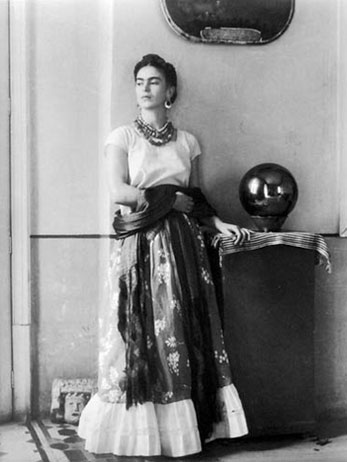
Escrituras de Frida Kahlo. Manuel Alvarez Bravo.
Canada and Mexico
Paolo Gasparini in Venezuela used an opposing approach to social documentation. Intended to illuminate the social and economic consequences of the intrusion of foreign capital and culture in to Latin American life.
The buoyant humor in the work of Raul Corrales, Maria Eugenia Haya, and Mario Garcia Joya in the 1970s and 1980s was unusual in Latin American photography. Used serial imagery, texts, set-ups, colorization, and montages.
Manuel Alvarez Bravo found it possible to embrace mythic implications of his own culture while acknowledging concepts such as Surrealism.
Pedro Meyer was active in Mexico and exposed the mysterious nature of ritual through harsh tonal contrasts, ambiguous gestures and intensity of facial expressions.
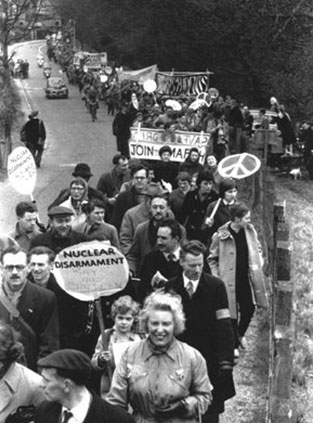
A CND march in the 60s.
Europe
World War II disrupted cultural life in Europe but did not entirely wipe out photographic activity. By the mid 1960s, Europeans had recovered from the dislocations of war to welcome a range of fresh ideas about photography.
Numerous directions in America attracted photographers who were initially tempted to varying degrees of abstraction, conceptualism, and symbolism. A variety of modes began to flourish as new equipment and materials, including Polaroid and color film and electronic cameras and digitization later.
Several European photographers created narratives using sequenced photographs and took part in performances that they documented and exhibited.
By combining drama, photography and graphic art they sought to infuse photographic expression with greater complexity than they thought possible with straight images. Quickening of interest in contemporary photography prompted the establishment of workshops, conferences and foundations for support of the medium.
Collections grew and engendered investigations into the history of the medium, resulting in serious publications in Czechoslovakia, England, France, Germany, Greece, Hungary, Italy and Spain. Documentary tendency remained strong among British photographers.
Traditional photography was transformed in the 1960s by Roger Mayne, sought to give documentation more consciously aesthetic and equivocal aspect.
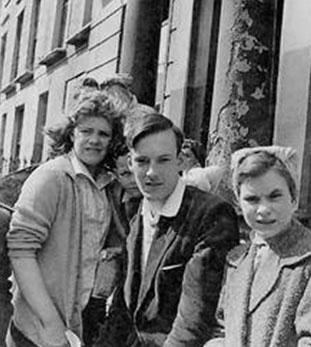
Roger Mayne.
Bill Brandt was Britain’s best-known photographer of the postwar years. Involved in Surrealism with Man Ray. Searched for “something beyond real”, and used optic distortions resulting from extremely wide-angle lenses and very small apertures. Produced a curious yet poetic landscape in which human form and nature merged.
Chris Killip’s documentations of working-class life reflected his understanding that photographs can be considered as aesthetic objects as well as records of actuality.
France
Photography in France was revitalized with a movement to encourage artistic photography. Members of Free Expression group founded in 1964, sought to enhance the status of photography by urging that it be introduced into university curricula.
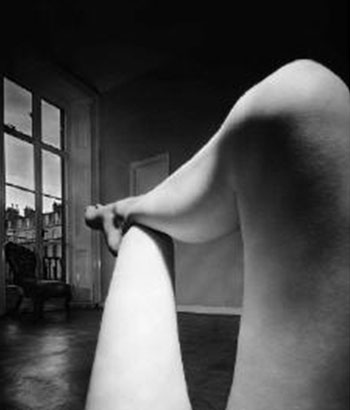
Belgravia, 1951. Bill Brandt.
Acknowledgement of photography’s visual significance spurred galleries devoted to the medium in Paris.
Denis Brihat, Lucien Clergue and Jean Dieuzade intervened in the photographic process by directing the model, establishing the settings or manipulating negative and print.
Straight work of Bernard Plossu known as “subjective realism” appear to be social in nature, but the photographer was concerned mainly with expressing “a personal vibration.
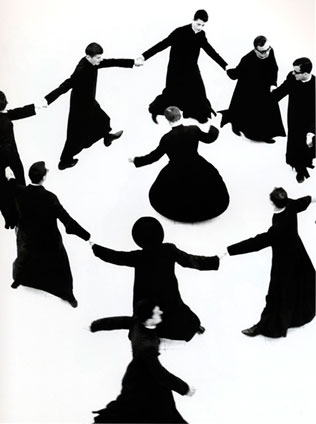
Italy, Senigallia, 1961-1963. Mario Giacomelli.
Italy, Spain and Portugal
In Italy, Spain and Portugal, photographers emerged from what has been called a “peripheral ghetto”- the result of more than twenty years of cultural isolation and indifference to the camera as an expressive tool.
The beauty of the land inspired Luigi Ghirri from Italy, whose elegant images combined feeling and aesthetic rigor served as a guidepost for Gianni Berengo, Franco Fontana, and Mario Giacomelli.
All photojournalists that produced views of nature that are romantic in tenor and transcendent in effect.
Images sustain interest because they mediate between the world as it is and as it is photographed, without calling undue attention to the aesthetic or conceptual aspects of the medium.
Neorealists celebrated their country’s release from the structures of fascism at the same time that they revealed the hardships of peasant life. Included Mario De Biasi, Nino Migliori and Fulvo Roiter.

Pool designed by Alain Capeilleres. 1976. Martine Franck.
Peter Magubane, imprisoned under apartheid, was South Africa’s leading photojournalist for over 50 years. Documented struggles of black South Africans.
Martine Franck joined collective Viva in France in order to carry out progressive social documentation. Used a rigorous formal structure to document the effects of middle-class culture on the individual.
Gilles Peress documented strife in Ireland, France and Bosnia and his work is distinctly personal and creates a powerful sense of alienation and chaos.
Japan
Josef Koudelka used lens distortion, blurs, tipped horizons, and unusual formats to evoke emotion.
Photography in Japan evolved under unique conditions. After a brief but rich period of modernist creativity during the 1920s, non-commercial photography parroted soft-focus Pictorialism or painting.
Following WWII and until about 1960, there was not much interest in photography as artistic expression.
Most Japanese photographers mainly worked for books and magazines favoring a realistic style.
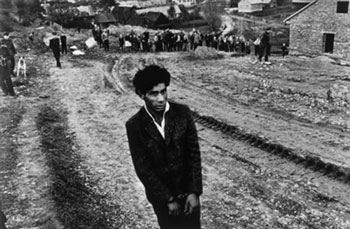
Gypsies. Josef Koudelka.
Goal of Japanese photography in the 1970s and 1980s was to “demonstrate that photography is a kind of consciousness that can be shared by everyone in daily life, rather than simply an expression of one’s own personality or identity.


